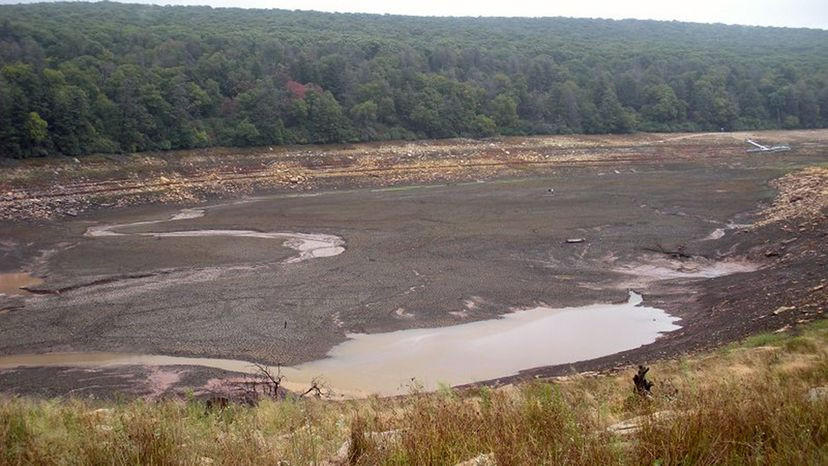Mountain Lake, nestled in the scenic Appalachian Mountains of Virginia, holds a unique place in popular culture. Famed as the backdrop for the iconic 1987 movie “Dirty Dancing”, the lake has drawn fans and tourists alike for decades. However, in recent years, this beloved landmark has faced a concerning environmental challenge: it has been shrinking, even disappearing at times. Understanding why the “Dirty Dancing Lake” is experiencing these dramatic water level fluctuations requires a look at a combination of natural and man-made factors.
One significant contributor to Mountain Lake’s woes is a prolonged period of drought that affected the region between 1997 and 2002. Data indicates that this drought resulted in approximately 30% less rainfall compared to the period from 1982 to 1996. Experts like Cawley and Watts suggest that climate change likely played a role in exacerbating these drought conditions. Cawley, who conducted research on Mountain Lake, even described it as an “environmental canary in the coal mine” for the Appalachian region. He highlighted the area’s exceptional biodiversity, making it particularly sensitive to climate shifts, and suggested that changes would become apparent here sooner than in many other locations.
Around the same time as this drought, Mountain Lake Lodge, the resort adjacent to the lake and famous for its “Dirty Dancing” connection, undertook construction of a conference center on its property. To comply with state environmental regulations, stormwater management basins were built. While these basins were standard practice, their impact on the lake’s water levels wasn’t immediately clear. Watts initially assumed the water would still reach the lake as groundwater. However, subsequent research by his students, involving groundwater profile modeling, revealed a different picture. The basins were diverting a significant portion of the water, redirecting it underground towards a nearby creek instead of allowing it to replenish Mountain Lake.
Given that this construction occurred in 2001, just before the lake’s water levels began to noticeably decline, Watts believes the stormwater basins are a significant factor in the lake’s shrinkage. The timing strongly suggests a causal link, indicating human intervention inadvertently contributed to the lake’s problems.
{width=828 height=466}Mountain Lake Lodge, the filming location of “Dirty Dancing”, experienced near-empty lake conditions between 2008 and 2012, highlighting the dramatic water level changes.
Beyond drought and stormwater management, other localized factors may also be at play. Cawley points to the cumulative impact of local housing developments, the University of Virginia biological station situated near the lake, and the Mountain Lake Lodge itself. Each of these contributes to the overall water dynamics of the area. Furthermore, the natural sediment cycle of the lake could be influencing drainage. Sediment accumulation can restrict the natural “pipe” through which the lake drains, causing water levels to fluctuate. This sediment flow is dynamic and changes over time, adding another layer of complexity to the lake’s water level variations.
In conclusion, the fluctuating water levels of Mountain Lake, the celebrated “Dirty Dancing lake,” are not attributable to a single cause. As Cawley aptly summarizes, “All these things are complex. You can’t say the lake disappeared because of x, y, or z.” Instead, a confluence of factors, including climate change-induced drought, the construction of stormwater basins diverting groundwater, local development, and natural sediment cycles, likely contribute to the lake’s enigmatic shrinking and swelling patterns. Understanding these interconnected elements is crucial for any future efforts to conserve and manage this culturally and ecologically significant landmark.

